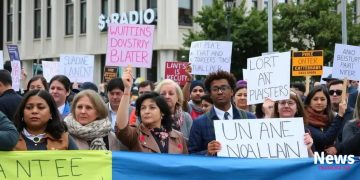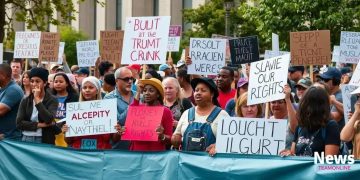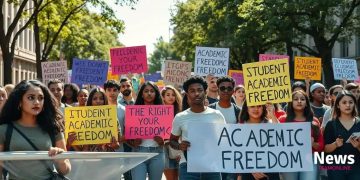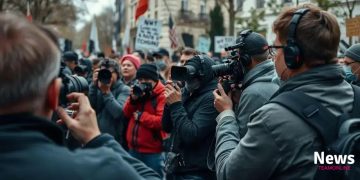Protester targeting legislation: what you need to know
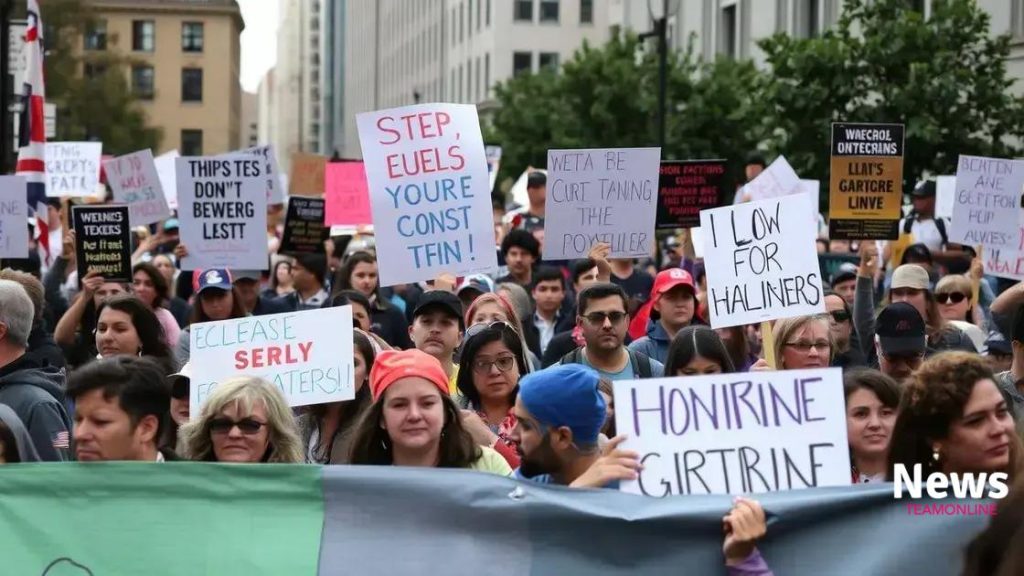
Protester targeting legislation regulates how protests are conducted, impacting free speech and raising concerns about enforcement challenges, public reactions, and the balance between safety and individual rights.
Protester targeting legislation is shaping the landscape of civic engagement today. Have you noticed how new laws are stirring conversations across communities? In this article, we’ll dive deep into these changes and their influence on our rights and freedoms.
Understanding protester targeting legislation
Understanding protester targeting legislation is crucial in today’s society. These laws often attempt to regulate how protests are conducted and can significantly impact the rights of individuals to express their opinions publicly.
The landscape of such legislation is evolving rapidly. Policymakers are motivated by a mixture of public safety concerns and the desire to manage civil unrest. In examining these laws, we can identify several key features and areas of contention.
Key Features of Protester Targeting Legislation
Many laws aim to balance the right to protest with public order.
- Restrictions on the location and time of protests
- Increased penalties for unlawful assembly
- Provisions for police oversight during demonstrations
- Legal protections for bystanders caught in protests
These aspects reveal the complexity of regulating public demonstrations. While the intention is to maintain peace, many argue that these laws infringe upon free speech. The debate surrounding the definition of acceptable protest behavior continues.
Public Reaction and Concerns
The reaction from the public has been mixed. Some groups support stricter regulations, citing safety concerns. Others fear that these laws could lead to restrictions on important civic practices.
This divergence highlights a broader conversation about democracy and rights. Activists often raise awareness about the potential for these laws to be misused or to disproportionately affect certain communities. Engaging in discussions on these topics ensures that the voices of ordinary citizens remain at the forefront of the conversation.
As legislation evolves, staying informed about changes is essential. This understanding empowers individuals to advocate for their rights effectively and engage meaningfully in the democratic process.
Key examples of recent laws
Key examples of recent laws targeting protesters illustrate the trend in regulating public demonstrations. These legal changes vary widely and reflect different governmental approaches.
Some laws focus on enhancing safety during protests, while others have been criticized for potentially stifling free speech. Understanding these examples helps citizens recognize the implications of such regulations on their rights.
Examples of Recent Legislation
Recently, several laws have been enacted across various states. These laws often include specific provisions regarding protests.
- Anti-protest laws which impose heavy fines for blocking traffic during demonstrations.
- Legislation requiring permits for gatherings of more than a set number of individuals, often aimed at large protests.
- New restrictions that define what actions can be deemed as unlawful assembly, leading to arrests.
- Increased police powers when dealing with protests, allowing for searches and crowd dispersal techniques.
These examples show a clear effort by some governments to exercise control over protests. However, they also raise critical questions about the balance between public safety and citizens’ rights to voice their opinions.
While supporters argue that these laws protect the community, critics warn that they may infringe on the vital democratic right to protest. As discussions continue, it is essential for the public to stay informed about changes and how they may affect engagement in civic activities.
Public reactions to these regulations
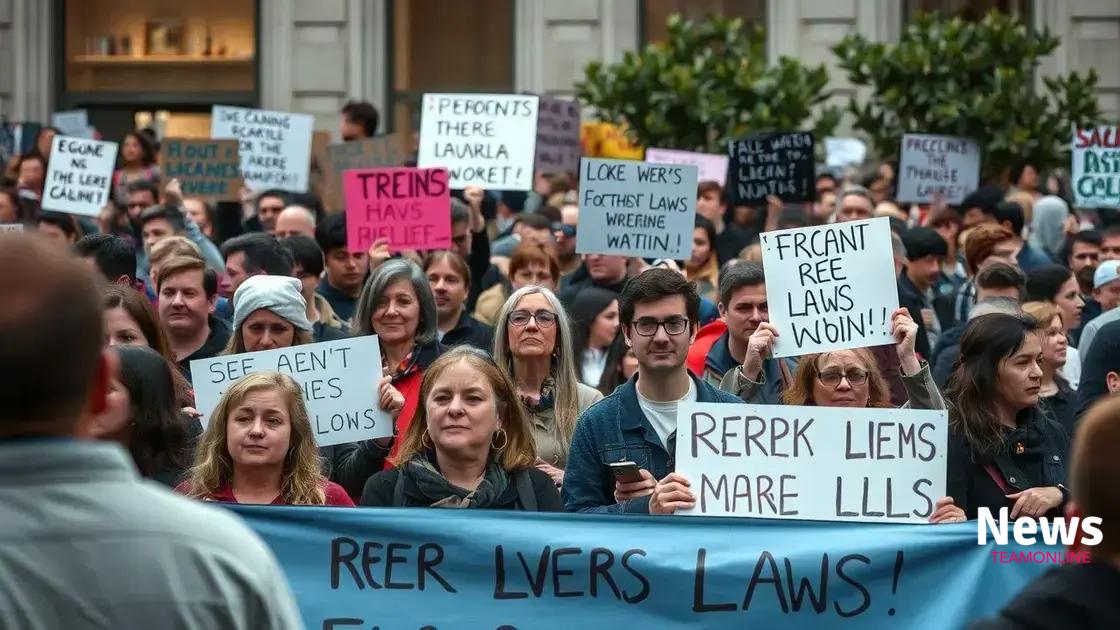
Public reactions to these regulations often vary widely, reflecting deep societal concerns and interests. Many individuals feel passionately about how laws impacting protests can affect their daily lives and civic engagement.
Some people support the regulations, believing they provide safety and order. They argue that managing protests ensures that public spaces remain accessible and that events do not escalate into violence. For them, clear rules help maintain peace during demonstrations.
Concerns Raised by the Public
Despite this support, significant opposition exists. Many consider these laws as threats to their rights.
- Freedom of speech is a frequent concern, as some believe that regulations limit their ability to express dissent.
- Critics argue that laws targeting protesters could disproportionately affect marginalized groups, silencing important voices.
- There are fears that increased police presence during protests may lead to more confrontations.
- Many citizens worry about the potential for laws to be misapplied, leading to unlawful arrests or fines.
Such concerns highlight the delicate balance between safety and civil liberties. As the public engages in discussions on these issues, they often share personal experiences that resonate with others. This exchange is vital to fostering understanding and catalyzing change.
The discourse surrounding these regulations can be emotionally charged, reflecting the passion many feel for their rights. As citizens continue to advocate for their views, the collective voice can influence future discussions and policy decisions, shaping how protests are managed in the future.
The implications for free speech
The implications for free speech regarding recent laws on protests are significant and complex. These regulations often aim to maintain order, but they also raise questions about their impact on individuals’ rights to express their opinions publicly.
Many advocates argue that these laws can create an environment where people feel unsafe to speak out against issues they care about. This concern is particularly relevant when laws impose harsh penalties for dissenting views or for participating in gatherings that the government deems unlawful.
Key Concerns Regarding Free Speech
One major issue is the potential chilling effect on free expression.
- Censorship risks: Laws that regulate protests can lead to self-censorship among individuals who fear legal repercussions.
- Marginalization: Certain communities may feel disproportionately affected by these laws, limiting their ability to advocate for change.
- Public debate: Healthy discourse is vital in a democracy, and restrictive laws can stifle diverse opinions.
- Legal loopholes: Vague language in regulations may allow for selective enforcement against specific groups.
The discussion about free speech and protest regulation continues to evolve. As citizens engage with these issues, it’s crucial to advocate for laws that protect the right to protest while also ensuring public safety. Their voices contribute to the collective effort of maintaining a healthy democracy where every opinion matters.
Understanding these implications allows individuals to make informed decisions about their participation in protests and to speak out against regulations they view as unjust. In this way, the fight for free speech remains an essential part of civic engagement.
Challenges in enforcement
Challenges in enforcement of protester targeting legislation often create tension between maintaining public order and protecting civil liberties. Law enforcement agencies face a difficult task in balancing these responsibilities.
One major challenge is the ambiguity found in many laws. This vagueness can lead to different interpretations by police and officials. Consequently, what one officer sees as a violation, another may not. This inconsistency can cause confusion among both protesters and law enforcement.
Training and Resources
Another challenge is the need for proper training and resources for law enforcement officers.
- Effective training: Officers must learn how to manage large crowds while respecting the rights of individuals.
- Resource allocation: Limited resources can hinder police effectiveness, complicating crowd control during protests.
- Public perception: How law enforcement interacts with protesters can affect public trust in the legal system.
- Community relations: Positive relationships between law enforcement and communities are essential for effective policing during protests.
Moreover, the implementation of laws varies across regions. Some areas may take a more aggressive stance, while others prioritize de-escalation. This inconsistency can lead to feelings of distrust in various communities.
The response to protests can also be influenced by public opinion and media portrayal. Negative coverage may prompt more forceful responses from police, while positive narratives could encourage a softer approach. Understanding these challenges is important for fostering dialogue between communities and law enforcement agencies.
FAQ – Questions about Protester Targeting Legislation
What is protester targeting legislation?
Protester targeting legislation refers to laws that regulate how protests are conducted, impacting the rights of individuals to express their opinions publicly.
How can these laws affect free speech?
These laws can create a chilling effect, limiting individuals’ willingness to express dissent due to the fear of legal repercussions.
What challenges do law enforcement face with these regulations?
Law enforcement may struggle with ambiguity in the laws, inconsistent interpretations, and finding the right balance between maintaining order and protecting rights.
Why is community engagement important in this context?
Community engagement fosters dialogue between citizens and law enforcement, ensuring that both sides understand each other’s perspectives and work towards healthy public discourse.
